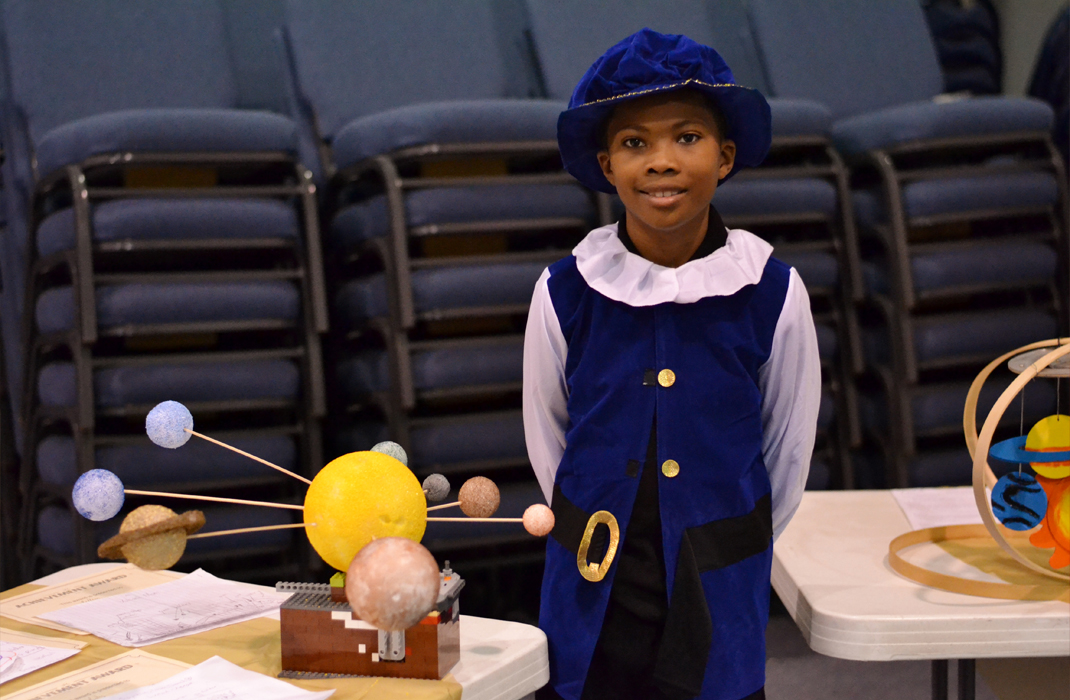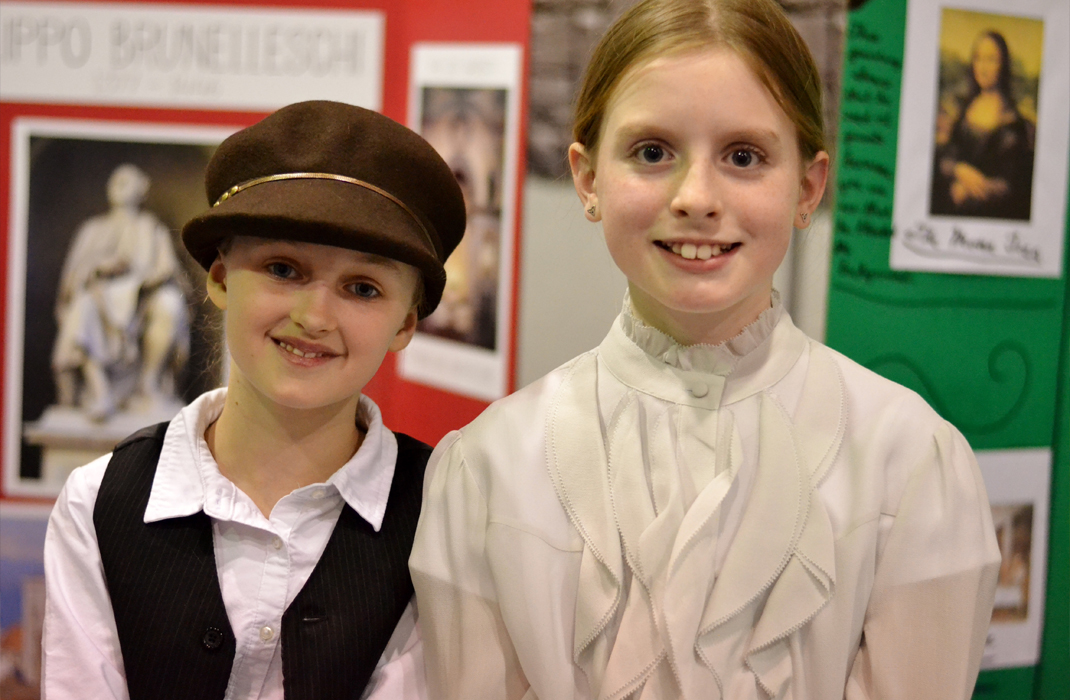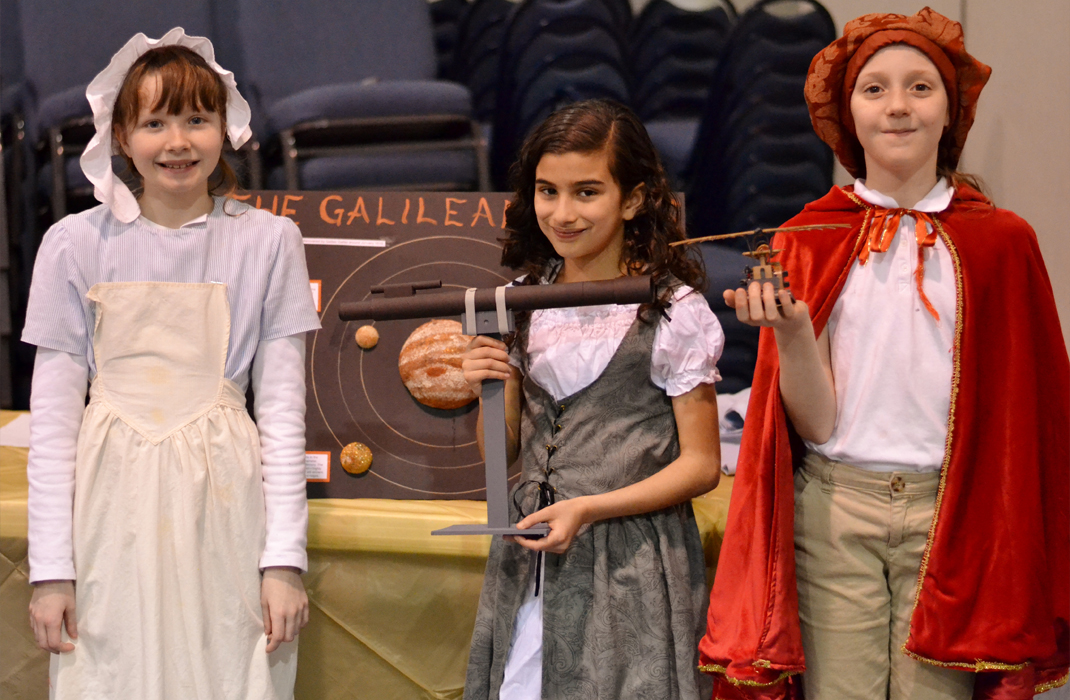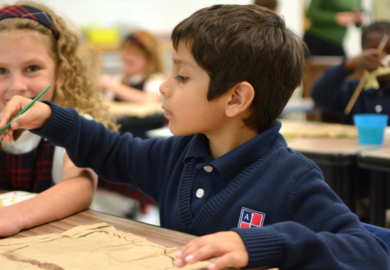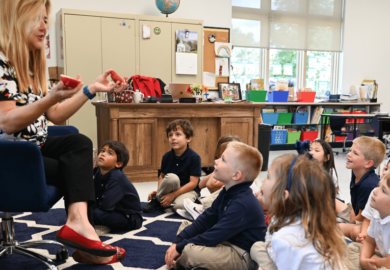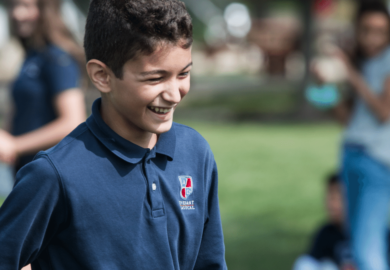The Renaissance Faire
Each year, the fourth-grade students at Covenant host a Renaissance Faire for their fellow grammar-school students. The fourth-graders research and then portray a historical figure from this time period. This enables them not only to have the opportunity to live out what it was like to be a part of the Renaissance by tasting Renaissance food and wearing Renaissance clothing, but also gives them a chance to think and act like a Renaissance person.
This type of holistic experience is an example of embodied learning, an important aspect of life at Covenant. Embodied learning is a holistic approach that requires students to employ their entire beings in the learning process. It engages a student’s body, mind, and (dare I say) soul, enabling him to discover new ideas, understand concepts more deeply, and integrate these into his life.
Embodied learning reinforces synapses and connections in the brain by associating knowledge with actions and (often) engaging the emotions. It provides an experience for students. This is not something sensational as a means of entertainment; rather, it is an opportunity to interact with important ideas and fully appreciate their significance. We seek to teach our students to recognize and love what is good, true, and beautiful, and we desire that, through the Spirit’s work, this would also become part of who they are. Embodied learning is a means to that end.
